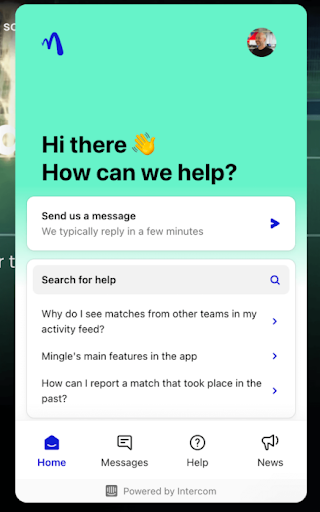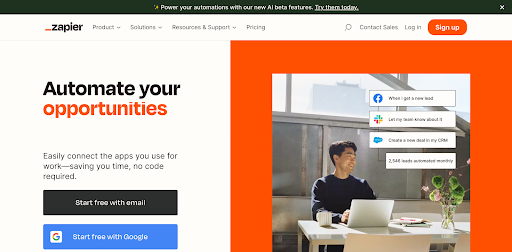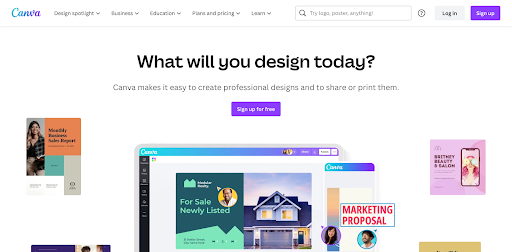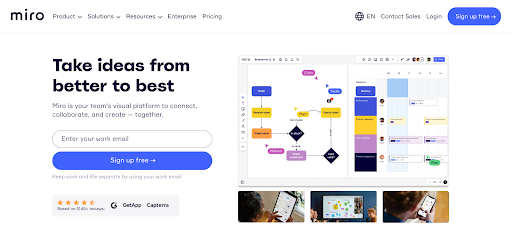Growth Loops: What They Are and How to Use Them
-
UncategorizedUpdatedPosted:
On this page
Growth. It’s the number one priority of almost every business and the number one thing that executives strategize in board rooms. After all, if you can’t grow, your profits will stagnate, and your business will lose relevance.
And with only 50% of businesses surviving five years, achieving that growth is a must.
Most people believe that you create a product first and then market it, but what if I told you there’s a smarter way? That’s where growth loops come in. They’re like this magical combination of product and marketing, all rolled into one. With growth loops, the marketing is built right into the product itself. It’s like having a built-in growth engine that keeps bringing in new users and customers without you having to constantly push and promote. This self-sustaining cycle ensures that each input generates a desired output, creating a powerful mechanism for growth. So, get ready to flip the script and discover the power of growth loops!
In this article, we’ll delve into the world of growth loops and how they can take your business to new heights. We’ll explore companies that have mastered the art of growth loops, and most importantly, we’ll show you how to implement them in your own business. So, keep reading to discover the secrets behind these powerful systems that can supercharge your sales and fuel your business growth!
What Are Growth Loops?
Picture this.
A customer signs up for your product or service, and as they go through the onboarding process, they receive a friendly prompt to share or recommend the content to their friends or refer someone they know. And guess what? That friend actually signs up for your product or service!
This is the magic of a growth loop – a continuous cycle where customers keep buying your product and passing it on to others who do the same. It’s like a never-ending loop of growth and success.
These systems are designed to ensure that every action leads to a desired outcome, which then becomes the fuel for the next action in a closed-loop system. It’s a powerful way to keep the momentum going and drive exponential growth.
Reforge’s seminal piece proposes a shift away from traditional growth funnels that rely on AARRR frameworks and toward growth loops.
But what exactly is a growth funnel, what are its limits, and why are growth loops being considered as a more effective strategy among marketing experts?
What Is a Growth Funnel?
A growth funnel, also known as a sales funnel or marketing funnel, is a model that represents the stages a customer goes through before making a purchase. It typically includes stages like awareness, interest, consideration, conversion, and retention. The main goal of the growth funnel is to help companies understand how customers progress through different stages and to provide strategies for boosting conversions at each step. It’s like a roadmap that guides businesses towards success by optimizing their customer journey.
Once upon a time, startups started using their own model of growth funnels that specifically caters to startups. Enter, the AARRR funnel.
AARRR Funnels
The AARRR framework, also known as the Pirate Metrics framework (makes sense right?), is widely regarded as one of the most popular and widely used growth funnel models. This framework, which specifically addresses the growth challenges encountered by startups, offers tailored actionable metrics and stages to meet their unique needs.
It was coined by investor and founder Dave McClure. He introduced this framework when he noticed that many companies were fixated on superficial metrics like social media likes, which didn’t translate into tangible growth.
In this framework, the letters represent:
- Acquisition – customers acquired through marketing techniques
- Activate – users ‘activate’ their purchase or membership by signing up
- Retention – customers return for repeat custom
- Revenue – each acquisition should bring in more money than it costs
- Referral – the user is prompted to refer another consumer via social media or an incentive program.
For comparison: while a growth loop is represented by a circle, a growth funnel, on the other hand, is linear.
The AARRR framework has been a useful marketing funnel, and it has proven effective in many ways. Unfortunately, it falls short on a few counts, in which a growth loop enjoys greater success. Let’s explore how growth funnels fall short.
Growth Funnels vs. Growth Loops: The Limitations of Funnels
They have a ceiling
In a growth funnel, the flow of customers depends on continuous external inputs. However, a growth loop operates differently by incorporating the input within the framework itself. When managed effectively, a growth loop can generate a new set of customers, bringing sustainability to the growth model. Unlike the linear nature of a growth funnel, a growth loop creates a self-sustaining cycle where the focus shifts from constant acquisition efforts to leveraging the loop for organic growth.
They’re consistently expensive
With an AARRR funnel, there is no automatic mechanism at the top to fuel the funnel. As a result, you need to consistently pour money into a marketing strategy, which, let’s face it, isn’t cheap. Activities like social media marketing and content marketing will cost you a lot, and the AARRR funnel does not inherently reduce these expenses over time.
They lack ‘network effects’
The network effect refers to the principle that the value of a business increases the more people use its products or services. Think of a streaming service that creates TV shows that people talk about or a social media site that more and more people sign up for.
If all your friends are watching a show or uploading pictures to a social media site, you’ll be more likely to do the same. While growth loops have network effects, growth funnels don’t, meaning you have to rely on more traditional forms of marketing to acquire new customers.
Types of Loops
User-generated content
One popular way companies create growth loops is by letting their users do the work for them. When users generate content, it not only saves marketing costs but also creates a sense of belonging among potential customers who want to be part of the community.
Let’s take Quora as an example.
On this popular site, users ask questions and other users provide answers. However, you can only see one question and answer at a time unless you sign up.

In this way, Quora doesn’t need to directly market to you. It simply publishes user-generated content that is optimized for search engines like Google. By making signing up a requirement to access the content, Quora encourages users to join the action.
Viral loop
Viral loops come in different forms, but the idea is that the product itself motivates users to spread the word. Personal loops occur when the product or service is better when used with friends, giving users an incentive to invite others to join.
Social viral loops occur when products or services create a buzz. The more people talk about them, the more others want to join in on the fun. Think of a new Amazon Prime show that users tweet about using a trending hashtag.
If enough people post tweets, their friends and family will be curious and want to see what all the excitement is about.
Real-Life Examples of Growth Loops
Intercom

- A user signs up for Intercom. Unlike in a growth funnel, no acquisition needs to be performed to get this user to sign up for the site. While Intercom initially will have used traditional marketing techniques, after a while, these users will sign up as a result of the loop’s output.
- The user configures Intercom chat on their site. Intercom runs a live chat feature that users can add to their website.
- Third-party site visitor sees that the chat is ‘Powered by Intercom.’ As shown in the screenshot below, the chat is proudly shown as ‘Powered by Intercom,’ creating a synonymity between the brand and live chat in users’ minds.

- The user signs up for Intercom. Influenced by the note at the bottom of the live chat feature, the site visitor remembers the brand for their own website, especially if they have a good experience using it. They sign up for Intercom, and the loop repeats.
Zapier

- A user signs up for Zapier. Zapier is an automation platform that allows users to integrate their web applications and automate workflows. The first step in the growth loop is for a user to sign up for the platform.
- The user requests integration. A user makes the most of Zapier’s offering by requesting integration with another online tool.
- Integration generates new pages for SEO indexing. Every time Zapier integrates with a new tool, a new landing page is created, such as Zapier x Gmail, which helps draw 2 million unique monthly visitors to Zapier’s site.
- The user signs up for Zapier. Thanks to the sheet ubiquity of Zapier on search engines, it’s pretty much impossible not to find if you’re searching for integrations, attracting thousands of new users a month.
Canva

- A user signs up for Canva. Canva is a site that allows users to easily create designs using templates.
- The user creates content and sends it to a friend. The friend then asks, ‘How’d you make this?’ and they’re pointed back toward Canva.
- The friend signs up for Canva. Or recommend it to their workplace.
- + SECOND LOOP – user creates a template to share on Canva. Once signed up, the user creates a Canva design template that others can use.
- The template generates new SEO search results. Canva becomes easier to find on Google with all the new optimized pages.
- A new user signs up for Canva. And the loop repeats!
Miro

- A user signs up to Miro. Miro is a digital collaboration platform that functions as a virtual whiteboard, so naturally, it works better when multiple colleagues are signed up.
- The user designs in Miro. Miro creates a design for project management using one of the platform’s existing templates.
- User invites their teammate to design. Realizing that the premise of the platform is that you need a collaborator, the user invites a colleague to collaborate on their design.
- The teammate signs up to Miro. And just like that, Miro has a new user!
Implementing Growth Loops in Your Marketing Strategy
Now that you understand the power of growth loops, it’s time to explore how you can implement them in your own business and supercharge your marketing efforts. By leveraging growth loops, you can achieve sustainable growth and drive exponential results. Here’s how you can get started:
Harness User-Generated Content
Encourage your users to create content related to your product or service. User-generated content not only saves on marketing costs but also creates a sense of community and belonging among potential customers. Consider implementing features that allow users to contribute and share their experiences, reviews, or creations.
Leverage Viral Loops
Design your product or service in a way that naturally motivates users to spread the word. Create incentives for users to invite their friends, emphasizing the benefits of using the product together. Additionally, focus on creating a buzz around your offering through social media, trending hashtags, or other viral marketing tactics.
Optimize for Search Engines
Ensure that your user-generated content and product-related pages are optimized for search engines like Google. This way, when potential customers search for relevant keywords, they are more likely to discover your content and join the loop. Implement SEO strategies to improve your visibility and attract organic traffic.
Integrate Sharing and Referral Mechanisms
Incorporate sharing and referral mechanisms within your product or service. Prompt users to share their experiences on social media or refer others to join. Offer incentives or rewards for successful referrals, creating a win-win situation for both the referrer and the new user.
Create a Seamless User Experience
Focus on providing an exceptional user experience that encourages users to engage and invite others. Make it easy for users to navigate, use, and share your product. Continuously optimize your product based on user feedback and behavior to enhance its value and increase user satisfaction.
By implementing these strategies, you can create your own growth loops tailored to your business. Remember to track and measure the effectiveness of your growth loops using analytics and adjust your approach as needed. With time, you can build a self-sustaining cycle of growth that brings in new users and customers organically, reducing your reliance on constant marketing efforts.
Next time you consider how to grow your customer base, consider the following questions.
- How can I make my product more interesting if users’ friends sign up?
- How can I reward my users financially if their friends sign up?
- How can I utilize user-generated content to attract new users?
- How can I create a talked-about product that will cause a buzz?
And that, my friend, is how you create a successful growth loop.
Want to send more personalized mobile and email messages to your users?
Learn moreCustomer story

How Vero helps Dribbble take full advantage of their customer data to improve personalization
